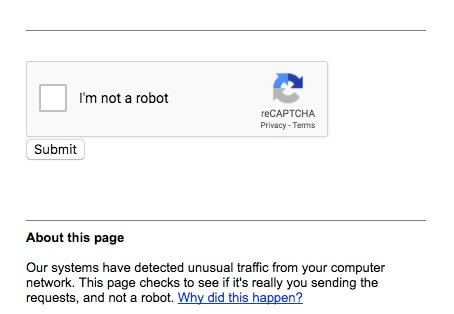Repost from: https://searchengineland.com/why-isnt-my-fabulous-content-attracting-quality-links-305208
If you’ve ever built links, you know how difficult and tedious a process it can be. It’s great when the stars align and everything works out perfectly, but those instances are rare and getting rarer.
Inboxes are flooded with unsolicited emails, and spam is at an all-time high. You may run into issues with client guidelines that seem unrealistic, or the person you’re pitching your content to may just be having a bad day.
What’s a good link builder to do? How do you get someone’s attention and promote your fabulous content when everyone is trying to do the same?
Let’s break down the main aspects of a link-building outreach campaign and examine ways and resources to help get your emails opened and responded to.
Content
The number one issue with getting good links is good content. Good content can make or break your link building. If you don’t have good content, getting links is ten times more difficult than if you have something unique and valuable to offer.
I feel that also holds true even if you’re buying links, unless you’re working with sites that only exist to sell links and ads. Many webmasters are becoming increasingly reluctant to link out to anything other than quality content that is useful for their readers.
I’ve worked on many campaigns with poor content or nothing to offer other than a sales or product page, and the conversion rate for those campaigns is significantly lower than it is when we’re able to offer great content resources. We’ve seen some campaigns with 80-90 percent conversions when we offered unique how-to guides or guides with video.
Here are a few roadblocks I’ve come up against when managing a content outreach program and ways to get around them.
When a potential host site already has similar content. If you don’t look to see if the topic or type of content you’re pitching isn’t already on your target site, you could be wasting a lot of time. I’ve learned that the hard way. There’s an easy solution, of course, and that’s to do a quick site: search with some major keywords from the piece you’re shopping in order to see if they already have something similar. It’s so simple, yet it’s one mistake that I’ve made multiple times, sadly.
The content isn’t the right fit for their readers. Obviously, you don’t want to try and shop an article on best dog breeds for children to a blog focused on senior health care, because the content would not be a good fit. Granted, seniors have grandchildren who may want a puppy, but overall, the purpose of the senior healthcare site is not to host content on puppy selection.
I have been approached to host articles about swimming pools because an employee had written an article and mentioned how he once worked for a company that installed swimming pools. The article was not about swimming pools, it just mentioned them in passing, and yet, we get emails anyway. It’s a very good idea to spend time reviewing potential host sites to be sure your content will be a good fit.
Making sure a site has the right “tone” is almost as important as making sure it has the right audience. We’ve tried to get links to content and mistakenly approached sites that had very different political views from those espoused in the article we were offering.
The content just isn’t link-worthy. This is a touchy subject, because no one thinks their baby is ugly. Some clients seem to have the idea that any content they produce is link-worthy, when in reality, it’s not. We’ve found that showing successful pieces of content on the same subject helps content developers understand the elements that need to be included to make the piece more linkable.
Discovery and prospecting
This is where my team and I spend the most time and experience the most frustration. While I think link building overall has not changed in the last ten years, there is one thing I have noticed: prospecting for good sites takes much longer than it used to. It’s tedious to prospect manually, but it can be inefficient to work with scrapers and automated tools. Advanced operators can also slow you down with the CAPTCHA.

Here are some workarounds and tips to help with discovery and prospecting.
You get too greedy and contact every site that looks remotely good. In my opinion, this is a giant time-waster for both you and the webmaster you are contacting. You may have the urge to cast a wide net, then sort things out. This works in very small or niche industries. But overall? You will quickly realize you are spending time responding to a lot of webmasters whose sites are not a good fit. It’s hard to offer something and then backpedal and say, “Sorry, I can’t do this after all.” You really need to look at each site you want to partner with or run the risk of going after links and sites that may hurt your link profile.
2. You have no idea how to find sites that would make great link partners. While I love advanced search operators, they can slow things down, especially if you don’t know how to use them properly. If you get really specific with searches, you may find very few results; but if you go too wide, you’ll get sites that use your keywords now and again but are not related to your industry. Use multiple tools to prospect; no one tool returns everything you need. Use the free trials on the paid tools so you get a feel for which one works best for you.
3. You get too caught up in metrics and leave some great sites on the table. One of my major pet peeves is when clients give me a large set of strict guidelines like:
- No links in articles that have any other links in them.
- No links in articles unless there are more than two outbound links.
- No links in articles that don’t have at least three comments.
- Don’t use a site unless it shows a high authority score as reported by various SEO tools.
I understand metrics can help in some ways, but I don’t think they should overshadow a site that may be the perfect fit.

Outreach
Link-building outreach is tough, and there’s a good chance some of your efforts will fail. Many emails are never even seen by the recipients; I personally delete tons of emails every day. If it’s not from someone I know OR it doesn’t have an interesting subject line, I’m deleting it.
I am pretty sure I am not the only one deleting email. Here are some issues you may encounter with your emails.
Your email doesn’t get opened. Getting your email opened is extremely difficult, as we’re all flooded with unsolicited emails. Using automated, canned email or doing silly little tricks like adding “re:” in the subject line to make it look like you’ve already communicated with them doesn’t work and should be avoided. We know what you’re doing!
If an email subject line is full of odd fonts, weird capitalization, emoticons, strange characters or misspellings, I’m deleting it. Telling me what to do and using all caps will get your email deleted as well.
![]()
You don’t get any response. This is a nightmare for me; I always wonder what I did wrong to get zero response. Was the subject awful? Did you just get caught up in a massive deleting-emails marathon by a frustrated person? Did the person open it and just not care? Agony. I’d rather get a rude response than no response. At least that way you can learn what you did wrong.
You can also learn from not getting responses. Take a hard look at your email, and if no one responds, your subject line is probably a dud.
You get a negative response. I feel any response is a good one, since it helps me understand if the subject line and email contents were good or bad. If you get a “please don’t email me again,” then I’m fine with that. We remove the address from our list and move on.
But if I get a response indicating the person on the other end didn’t like the content, I find that feedback very useful. Sometimes you don’t know what needs to be changed until someone who isn’t close to the subject tells you.
Another reason not to send automated, canned email to off-topic sites or send “bad” email? Public humiliation. Every now and again a webmaster will publicly share a bad email which humiliates you or your client. Not good. Send a professionally worded email to solid prospects and this shouldn’t happen.
Negotiation and help
Sometimes you have to do a lot of negotiating to get a link; this is true when buying links or attracting them with content. Sometimes you get lucky and a webmaster just links to you without you doing anything other than showing your content. It’s not always that easy, though. We’ve had webmasters ask us to clarify what we want. We’ve had webmasters put up links that don’t go anywhere. We’ve had a lot of webmasters who don’t even know how to insert link code, and we’ve had to talk them through it. You name a crazy situation, we’ve probably seen it.
Here are a couple of issues you may encounter.
A webmaster has absolutely no clue what you want, why they should give you a link or how to insert a link. Anyone can have a blog these days, but you’d be surprised to know how many people don’t have a clue about how to run them, much less code.
Occasionally, we find a blogger who has never been approached for a link and has no idea how to add a link to already published content. In some ways, I feel like these “newbies” are gems since they are not spammed up, but in general, inexperienced bloggers can be hard to work with because they don’t how to insert a link or because they do it incorrectly.
We end up spending a lot of time with these bloggers, and that time is not always worth it. Again, review any potential link partner with a strategic eye, and remember, time is money.
Webmasters become frustrated and bow out. This has happened several times with webmasters who don’t understand link building or know how to insert a link. It also happens when they misunderstand what we’re asking.
We’ve had a couple agree to a placement only to “phone a friend” and ask if what they are doing is a good idea or not. We’ve heard people come back with “Well, I’ve heard what you’re asking is a scheme to steal my passwords and identity” or “I’ve been told you’re trying to hack into my site in some way.” We’ve seen a lot of craziness here.
Offering clear and concise information in your initial pitch email will help eliminate a lot of confusion and save you time down the road. Be clear about your intentions, and when possible, offer testimonials or examples of other sites hosting similar content.
Webmasters do what they want, which is not always what you want them to do. Hey, it’s their site, so they can do what they want, but sometimes, it can be a problem.
In cases where you want something very specific, be specific with what you want. We’ve negotiated great content with a resource link in it and found the link removed and listed in tiny font on the sidebar of the home page. We’ve also had people move the resource link to the end of the article or post the link on every single page on the website. Moving links doesn’t help the reader understand the story or provide needed information, it often makes the story confusing. Telling people up front why the links are embedded the way they are goes a long way to keeping them in place.
Follow-up
There’s a lot of debate about how to best follow-up with webmasters when conducting a link campaign. I hate it when I’m bugged nonstop, but I also can’t ignore the fact that our success rate is due in part to our follow-up procedures.
I’ve seen cases it took eight followup emails to get content placed. I used to think we should give up after try three, but many of our links go live after more than five emails, so I no longer feel that way. It’s irritating, but it really pays off.
Here are some mistakes you may be making with your follow-up efforts.
You don’t remember to include an opt-out. Including opt-out instructions is standard on all of our outreach email. Since we depend on webmasters for links, why run the risk of really irritating them when it’s so easy to give them an out?
![]()
You don’t do any, or enough, follow-up, and you leave potential links on the table. If you’ve ever implemented a link-building campaign, you know you can get some great links by following up. With so many emails hitting everyone’s inbox these days, it’s very easy for your outreach to get overlooked. Following up at the right time can do the trick. Maybe you feel like you should follow up only once. That next email could be the one that lands the link.
Keep your emails light and informational, and don’t forget the opt-out!
You waste your time following up too many times or on too many platforms. This can be massively inefficient. If you’ve followed up more than 10 times, then most likely that link is not going to happen, and you’d be much better off focusing on outreach to other webmasters.
This might be a personal preference, but I don’t really like to be called out on Twitter for not responding to an email. I’ve seen people doing this a lot recently, and I do wonder about the success rates. I might go and search for the email they are referring to and then respond, but I would be quite annoyed by this method.
I don’t really mind the tweets that say, “Hey Julie, I sent you an email,” but I do mind the ones that say, “Hey Julie, you haven’t responded to me.” That’s just rude.
To close
I really feel like I could write this same article every month and come up with completely new examples of what could go wrong. At least every few weeks I hear myself exclaim “well that’s a new one!”
I suppose that’s one thing that keeps link building so fascinating for me. It might be tedious, but it’s never boring. I really think many people learn best from their mistakes, so I try to look at these issues as being helpful. The key is to view problems as a learning experience and to wait excitedly for the next crazy thing to happen.













